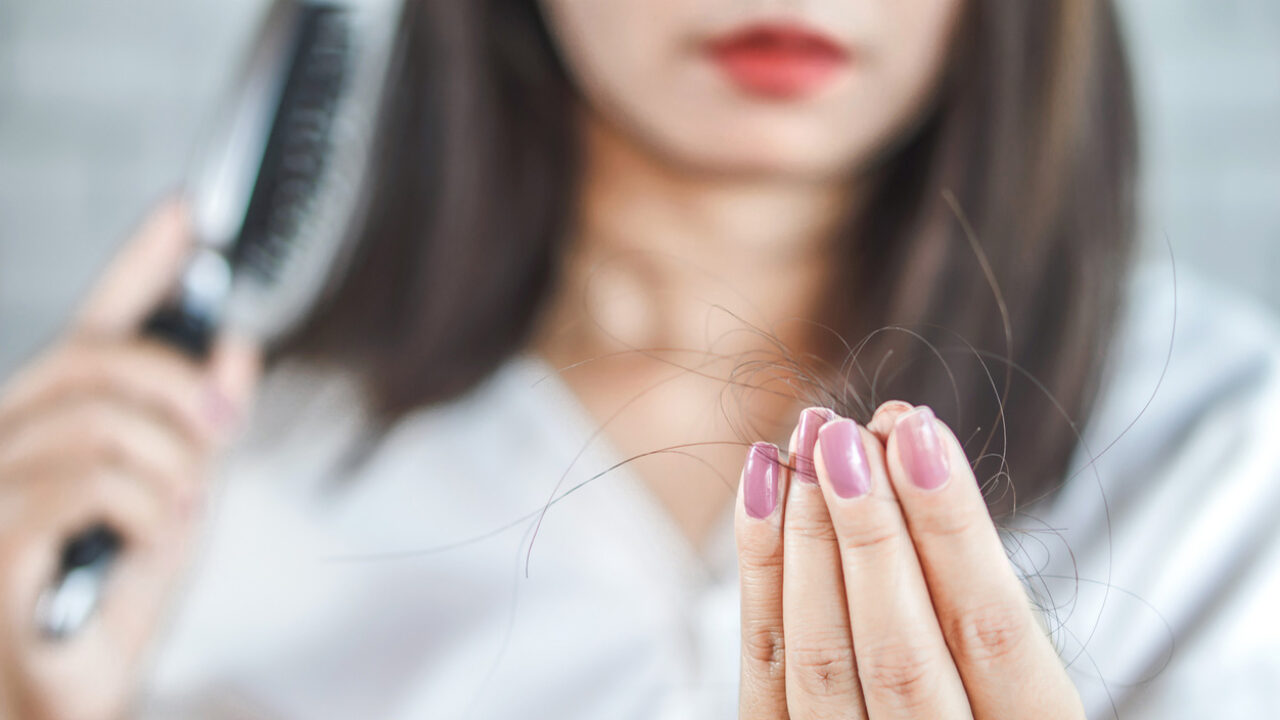
When it comes to hair conditions, trichotillomania is less known than say the likes of alopecia, but that’s not to say it’s not as devastating or as impactful on the confidence of people with the condition.
The reason it may not be considered alongside alopecia is that it’s largely misunderstood. Instead of being a problem with your scalp or hair, trichotillomania is a mental disorder, also referred to as, ‘TTM,’ or ‘trich’, and is caused when someone has a strong urge to persistently rub or pull out their hair.
It affects approximately 350,000 people in the UK yet due to the embarrassment associated with the condition, there may be a lot more people undiagnosed.
People with trichotillomania include Samantha Faiers (from ITV’s Sam and Billie: The Mummy Diaries) who battles with the urge to pull her eyelashes out. Like a lot of people with trich, her hair pulling started from a young age and has continued into adulthood.
To help shed light on the condition, and hopefully encourage people to seek a diagnosis, we’ve explained more about trichotillomania below including what is it, what causes it and if there is a trichotillomania treatment.
FURTHER READING: How to manage hair loss and make hair grow faster
Trichotillomania, or trich is a condition often accompanied by other disorders, such as depression, anxiety, or obsessive-compulsive disorder (OCD). It can also be triggered by periods of intense stress.
Sufferers of Trichotillomania can have the urge to pull out hair from their scalp, or other parts of their body, including their eyelashes, eyebrows, genitals, back, arms and legs.
Trich usually develops just before, or during early teen years, but then it’s most often a lifelong problem. It can affect both men and women, but it’s a disorder that predominantly affects women.
Hair pulling and the resulting hair loss can be very distressing. It’s often followed by guilt and remorse, which can increase stress and exacerbate the problem, and because it’s a mental condition, it’s incredibly difficult for someone to stop doing it.
This constant hair pulling can leave patches of hair loss, as well as scarring and infected hair follicles. If it continues it can lead to scarring alopecia, where the hair doesn’t grow back.
FURTHER READING: Alopecia areata: What is it, what causes it and is there an alopecia treatment that works?
It’s not entirely clear what causes trich. It could be a chemical imbalance in the brain, similar to OCD, or changes in hormone levels during puberty. Or it could be as a result of how someone deals with stress or anxiety.
Hair pulling can also be a type of addiction, so the more hair someone pulls out, the more they want to continue doing it.
Some people pull their hair out for sensory stimulation when they are feeling anxious and others may do it subconsciously when they’re feeling bored.
TTM is often what’s known as compounding anxiety, where you pull your hair because you’re anxious and then you’re anxious because you can’t stop pulling your hair. It can be a vicious cycle.
A type of CBT called ‘habit reversal training’ is usually used as a trichotillomania treatment, and the aim of this treatment is to replace the bad habit of hair pulling with a safer alternative
Trich is a disorder that can be successfully managed, but not cured. A type of CBT called ‘habit reversal training’ is usually used as a trichotillomania treatment, and the aim of this treatment is to replace the bad habit of hair pulling with a safer alternative.
Some sufferers cover hair loss areas with hair extensions or wigs. There’s also the option of an inter-lace system that covers the area with mesh, extensions, and hair, creating a barrier to prevent further hair pulling. However, the psychological causes need to be dealt with in order to stop the hair-pulling altogether.
If you think you may be suffering from trich it’s important you speak to your GP to find ways to help you to limit or stop your hair pulling.
If you’re looking for a trichotillomania treatment – you want to stop it from getting worse, or prevent it entirely, there are a few options you can try (after speaking to your GP):
FURTHER READING: Best hair oil: The best hair oils for thinning hair, boosting hair growth, frizz and more
Living with trichotillomania can cause a lot of guilt and shame to sufferers, but it’s important to remember that it’s not your fault and you’re not alone.
#ITSNOTJUSTHAIR
Launched in May, the Monpure campaign was set up to shine a spotlight on female hair loss. A condition that affects huge swathes of women.
Data released to coincide with the campaign found that less than half (45%) of women go through life with a full head of hair.
Some 88% of women with hair loss are suffering because of the negative impact it has on their daily lives, and 55% of female hair loss sufferers said they felt their condition was not taken seriously.
Although there’s not a definitive treatment for trich, the disorder can be successfully managed.
As well as speaking to professionals, such as your doctor, or a qualified therapist, there are also support groups available.
Speaking to other sufferers can help living with TTM much easier and limit the effect it has on your health and appearance.
Hair loss advocate and trich sufferer, Hattie Gilford explains: “A lot of people don’t even know what trichotillomania is, even though one in 50 people have the condition. People often say ‘just stop pulling your hair out” which is absolutely impossible – it’s far from that simple.
“I battled trichotillomania for 18 years and it’s the hardest journey I’ve ever been on. I felt like I was the only person in the world with trichotillomania, because it’s not often spoken about.”
Hattie recently took part in leading scalp care brand Monpure on its #It’sNotJustHair campaign. Launched in May, the Monpure campaign was set up to shine a spotlight on female hair loss. A condition that affects huge swathes of women.
Data released to coincide with the campaign found that less than half (45%) of women go through life with a full head of hair.
Some 88% of women with hair loss are suffering because of the negative impact it has on their daily lives and 55% of female hair loss sufferers said they felt their condition was not taken seriously.
Alongside Hattie, four other women, each with alopecia, went public with their own hair loss stories, to build awareness and encourage greater conversation about the problem.
You can read each of these women’s stories at the #It’sNotJustHair web page.

Kat is a freelance journalist, photographer, and the founder of Simply Gender Free – a company dedicated to smashing gender stereotypes in kids’ products. As a mum of two, Kat is passionate about making the world a better place for the next generation
